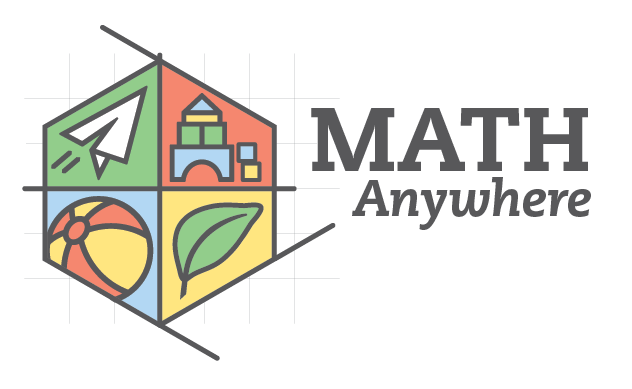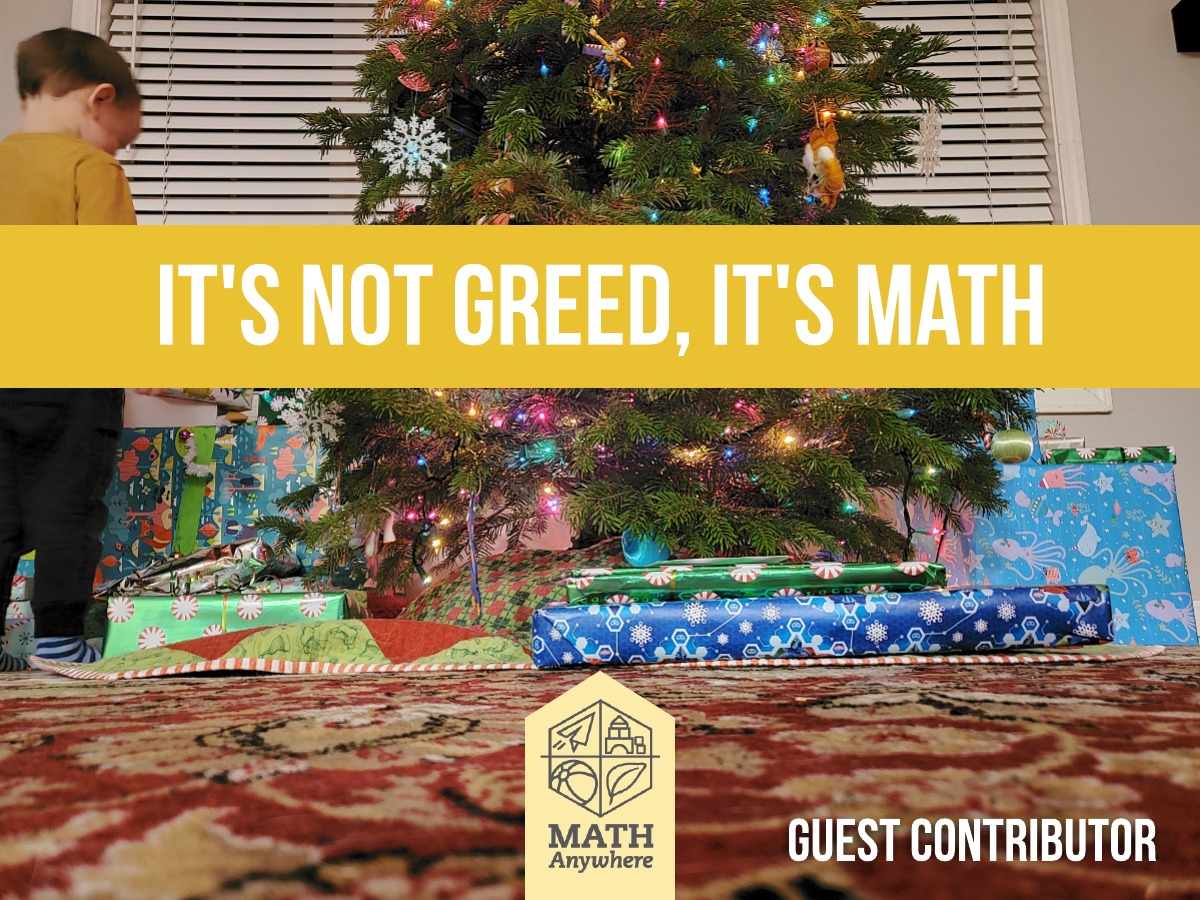“Whoa! This present is HUGE! It’s for me! Mine’s the biggest!”
“Look at this little tiny present. It’s so cute!”
“This one is SO HEAVY!”
“How many presents do I have now?”
“Who has the most?”
At first I cringed to hear what sounded like selfishness and greed, and my impulse was to hide the gifts away, but I remembered how much I enjoyed sorting and re-sorting wrapped presents as a child. Admiring the wrapping paper, comparing sizes, weights and amounts, and then it hit me: This is math.
Not only that, it’s the best kind of math, that which is natural, playful and not initiated by an adult. My 10, 7, 5 and 3-year-old are playing “Same & Different”, “How Many”, “Find Shapes” and other math games, and doing a little reading too, as my 5-year-old tries to decipher the “to” and “from” tags. The colorful presents are the perfect subject for such games, and it’s keeping them happily occupied in the exciting days leading up to Christmas. Now I want to put presents into groups of fours and play “Which One Doesn’t Belong?” as a family. What fun!
And I’m not going to stress about their comparisons of childhood wealth, because I know when the day comes and they open the gifts, the contents so carefully selected for each child will put all the math out of their heads.

Melissa Burt
Guest Contributor
Melissa is a Graphic Designer & Copywriter at Educational Service District 112 who provides design for Math Anywhere’s printed and online materials. She is also the mother of four young math-curious kiddos.

